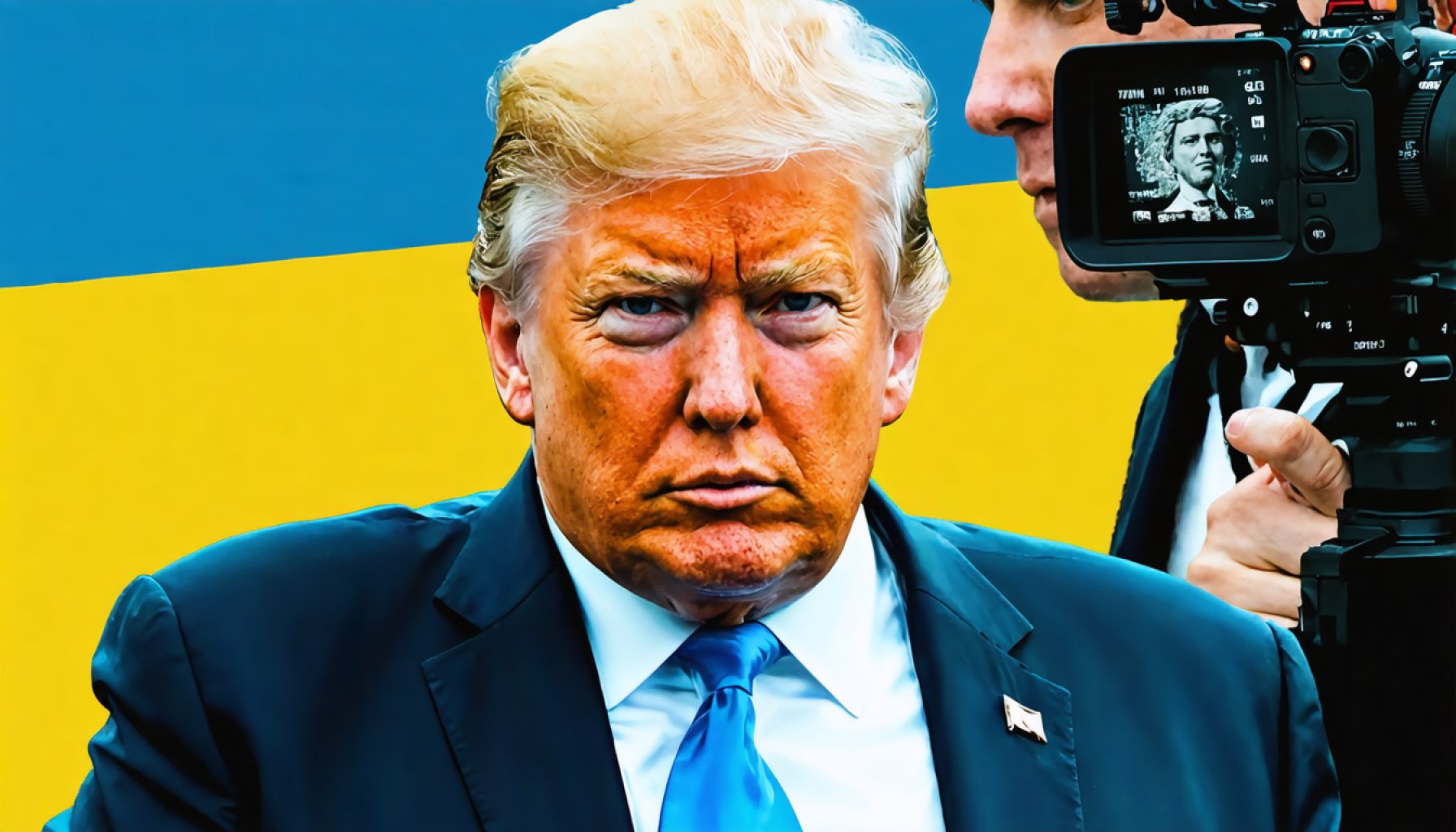- Donald Trump’s comments on Ukrainian leader Volodymyr Zelenskyy’s approval ratings and elections stir global diplomatic circles.
- Speculation arises about potential shifts in U.S. foreign policy towards Russia amid Trump’s rhetoric.
- The suggestion to reconsider Ukraine’s current geopolitical stance provokes concern among European allies.
- Trump’s vision implies a possible economic and political thaw between the U.S. and Russia.
- Allied nations are wary, questioning the future direction and implications of U.S.-Russian relations.
Vivid images swirl as the scene unfolds: the face of an American president who once reveled in the catchphrase “You’re fired” now delivers a diplomatic jab with all the subtlety of a train wreck. Against the backdrop of delicate peace negotiations, Donald Trump’s words ripple across the globe like a seismic wave, shaking perceptions and alliances. As he reflects on Volodymyr Zelenskyy’s dwindling approval ratings, he questions whether the Ukrainian populace should demand elections, painting a picture of democratic dereliction that seems far from innocent.
The corridors of power buzz with speculation. Is this a nod towards Moscow, a gesture welcoming Russian influence in crafting a blueprint for peace in Ukraine? Trump’s rhetoric teeters on an edge that hints at changing winds, raising eyebrows in Kiev and capitals across Europe. The suggestion that Ukraine never should have embarked on its current struggle sends shockwaves, redirecting narratives and leaving allies wondering if Putin now pens Washington’s foreign policy scripts, word by word.
With the deftness of a painter switching palettes, Trump pivots from past standoffs towards a vision of economic and political detente with Russia, his intentions a puzzle yet to be solved. Allies, who once marched in step, now find themselves at a crossroads, peering down a path where the U.S. and Russia walk side by side. Devotees of the Atlantic charter, their brows furrowed, ask a shared question: where is Trump leading them, and is the route a road to peace, or a cul-de-sac filled with uncertainty?
Trump’s Diplomatic Playbook: Could It Redefine Global Alliances?
How-To Steps & Life Hacks for Analyzing Diplomatic Rhetoric
1. Identify Key Statements: Focus on standout quotes that encapsulate strategic shifts.
2. Contextualize: Consider the timing and geopolitical context surrounding the statements.
3. Analyze Impact: Evaluate how these statements influence international relations and public perception.
4. Compare & Contrast: Look at how similar statements were perceived historically to predict outcomes.
Real-World Use Cases: Navigating Diplomatic Challenges
– Foreign Policy Strategy: Nations can leverage Trump’s pivot to reassess alliances, strategizing around potential U.S.-Russia collaborations.
– Policy Formulation: Diplomatic advisers use such rhetoric shifts to plan multilateral engagements and anticipate changes in global political dynamics.
Market Forecasts & Industry Trends
– Defense Sector: A shift towards U.S.-Russia détente could reduce tensions, impacting defense spending, as countries may adjust military budgets.
– Energy Markets: Improved U.S.-Russia relations could influence global energy supplies, possibly stabilizing prices in the long term.
Reviews & Comparisons: Historical Context
Comparing Trump’s rhetoric to past diplomatic shifts, such as Nixon’s opening to China, provides insights into the potential outcomes. Historically, initial skepticism often transitions to strategic benefits, though risks remain.
Controversies & Limitations
– National Security Concerns: Critics argue that Trump’s approach could compromise NATO’s cohesion and embolden adversarial actions.
– Lack of Transparency: Without clear policy outlines, uncertainty prevails, complicating ally relations.
Security & Sustainability
– Security: A peaceful U.S.-Russia relationship could reduce global military conflicts, potentially enhancing security.
– Sustainability: Reduced geopolitical tensions can redirect focus to collaborative global sustainability efforts.
Insights & Predictions
– Short-Term Turbulence: Allies may initially resist policy shifts due to uncertainty.
– Long-Term Realignment: Potential for a rebalance in global power dynamics, especially if U.S.-Russia economic ties deepen.
Tutorials & Compatibility
For diplomats and analysts, understanding Trump’s rhetoric requires historical knowledge and geopolitical insight. Courses on international relations and diplomatic history are invaluable.
Pros & Cons Overview
Pros:
– Potential peace and reduced military conflicts.
– Economic opportunities from U.S.-Russia collaboration.
Cons:
– Strained traditional alliances.
– Risk of emboldening authoritarian regimes.
Actionable Recommendations
– Stay Informed: Regularly update on geopolitical developments through credible sources.
– Engage in Dialogue: Foster discussions within international forums to voice concerns and advocate for transparent policies.
For further exploration, visit CNN for comprehensive analysis and updates on global diplomatic affairs.
